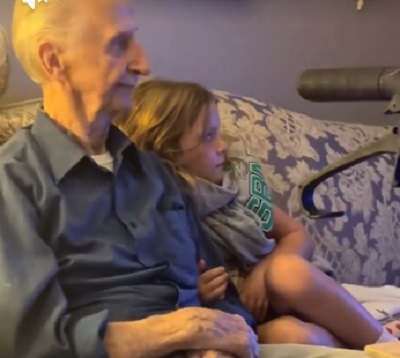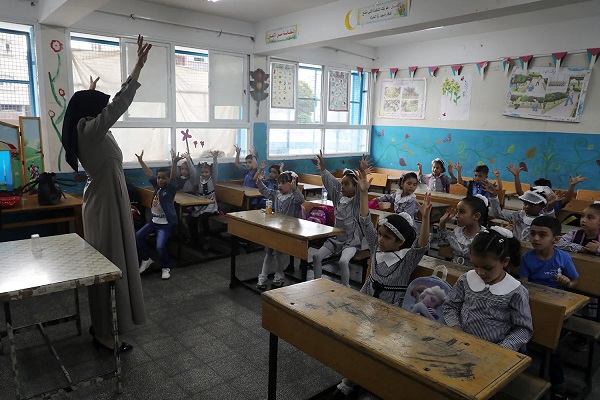Education
Eastview Middle School teacher up for MVT award!

From Red Deer Public Schools
Local in the running for NHL/NHLPA Most Valuable Teacher award
Eastview Middle School Teacher Jeremy Spink has been selected as a nominee for the 2020/21 NHL/NHLPA Most Valuable Teacher for the month of February.
Spink is one of 20 teachers from across North America who are vying for the title. The teacher selected as this month’s finalist will win a personalized NHL club jersey and a $10,000 technology grant for their school to help bring Science, Technology, Engineering and Mathematics concepts to life for students.
The grand prize winner, announced in May, will receive an additional $20,000 for their school, and $1,000 towards a personal technology device to improve their virtual classroom experience.
“It was a shock to find out that I was a finalist, but it’s really exciting,” said Spink, who is also a minor hockey coach and runs a charity hockey tournament every year to raise money for Melanoma research and other local charities.
Spink has incorporated the Future Goals™ – Hockey Scholar program into his classroom, which is designed to leverage STEM in hockey to create a fun and memorable learning experience.
“It is a great program and it all ties right into our curricular goals,” he said. “I am dedicated to teaching applications for STEM because I know that it not only impacts how healthy and productive students are during this time, but also their well-being and success far beyond the K-12 years.”
Eastview Middle School Principal Kevin Robertson said Spink has been a leader in the school’s hockey program and worked with other teachers in delivering programming to Grades 6-8.
“Jeremy has been a big part of Eastview for more than 20 years. In his hockey class, and in all of his classes, he instills a love of learning and particularly a love for the game for all of his hockey class students, through positive interactions and his infectious enthusiasm,” said Robertson. “If he were to win the MVT for the month of February, we would look at how we could further support technology in our classrooms, whether through more devices, or through other specific technologies for our hockey program and other areas to supplement instruction.”
How can the Red Deer community help? By voting for Spink once a day until February 28. To vote, visit https://www.nhl.com/mvt.
Alberta
Schools should go back to basics to mitigate effects of AI

From the Fraser Institute
Odds are, you can’t tell whether this sentence was written by AI. Schools across Canada face the same problem. And happily, some are finding simple solutions.
Manitoba’s Division Scolaire Franco-Manitobaine recently issued new guidelines for teachers, to only assign optional homework and reading in grades Kindergarten to six, and limit homework in grades seven to 12. The reason? The proliferation of generative artificial intelligence (AI) chatbots such as ChatGPT make it very difficult for teachers, juggling a heavy workload, to discern genuine student work from AI-generated text. In fact, according to Division superintendent Alain Laberge, “Most of the [after-school assignment] submissions, we find, are coming from AI, to be quite honest.”
This problem isn’t limited to Manitoba, of course.
Two provincial doors down, in Alberta, new data analysis revealed that high school report card grades are rising while scores on provincewide assessments are not—particularly since 2022, the year ChatGPT was released. Report cards account for take-home work, while standardized tests are written in person, in the presence of teaching staff.
Specifically, from 2016 to 2019, the average standardized test score in Alberta across a range of subjects was 64 while the report card grade was 73.3—or 9.3 percentage points higher). From 2022 and 2024, the gap increased to 12.5 percentage points. (Data for 2020 and 2021 are unavailable due to COVID school closures.)
In lieu of take-home work, the Division Scolaire Franco-Manitobaine recommends nightly reading for students, which is a great idea. Having students read nightly doesn’t cost schools a dime but it’s strongly associated with improving academic outcomes.
According to a Programme for International Student Assessment (PISA) analysis of 174,000 student scores across 32 countries, the connection between daily reading and literacy was “moderately strong and meaningful,” and reading engagement affects reading achievement more than the socioeconomic status, gender or family structure of students.
All of this points to an undeniable shift in education—that is, teachers are losing a once-valuable tool (homework) and shifting more work back into the classroom. And while new technologies will continue to change the education landscape in heretofore unknown ways, one time-tested winning strategy is to go back to basics.
And some of “the basics” have slipped rapidly away. Some college students in elite universities arrive on campus never having read an entire book. Many university professors bemoan the newfound inability of students to write essays or deconstruct basic story components. Canada’s average PISA scores—a test of 15-year-olds in math, reading and science—have plummeted. In math, student test scores have dropped 35 points—the PISA equivalent of nearly two years of lost learning—in the last two decades. In reading, students have fallen about one year behind while science scores dropped moderately.
The decline in Canadian student achievement predates the widespread access of generative AI, but AI complicates the problem. Again, the solution needn’t be costly or complicated. There’s a reason why many tech CEOs famously send their children to screen-free schools. If technology is too tempting, in or outside of class, students should write with a pencil and paper. If ChatGPT is too hard to detect (and we know it is, because even AI often can’t accurately detect AI), in-class essays and assignments make sense.
And crucially, standardized tests provide the most reliable equitable measure of student progress, and if properly monitored, they’re AI-proof. Yet standardized testing is on the wane in Canada, thanks to long-standing attacks from teacher unions and other opponents, and despite broad support from parents. Now more than ever, parents and educators require reliable data to access the ability of students. Standardized testing varies widely among the provinces, but parents in every province should demand a strong standardized testing regime.
AI may be here to stay and it may play a large role in the future of education. But if schools deprive students of the ability to read books, structure clear sentences, correspond organically with other humans and complete their own work, they will do students no favours. The best way to ensure kids are “future ready”—to borrow a phrase oft-used to justify seesawing educational tech trends—is to school them in the basics.
Business
Why Does Canada “Lead” the World in Funding Racist Indoctrination?
-

 Censorship Industrial Complex21 hours ago
Censorship Industrial Complex21 hours agoDeath by a thousand clicks – government censorship of Canada’s internet
-

 Daily Caller22 hours ago
Daily Caller22 hours agoChinese Billionaire Tried To Build US-Born Baby Empire As Overseas Elites Turn To American Surrogates
-

 Great Reset1 day ago
Great Reset1 day agoViral TikTok video shows 7-year-old cuddling great-grandfather before he’s euthanized
-

 Automotive1 day ago
Automotive1 day agoPoliticians should be honest about environmental pros and cons of electric vehicles
-

 Digital ID20 hours ago
Digital ID20 hours agoCanada releases new digital ID app for personal documents despite privacy concerns
-

 Community17 hours ago
Community17 hours agoCharitable giving on the decline in Canada
-

 Alberta23 hours ago
Alberta23 hours agoSchools should go back to basics to mitigate effects of AI
-

 Bruce Dowbiggin19 hours ago
Bruce Dowbiggin19 hours agoNFL Ice Bowls Turn Down The Thermostat on Climate Change Hysteria








